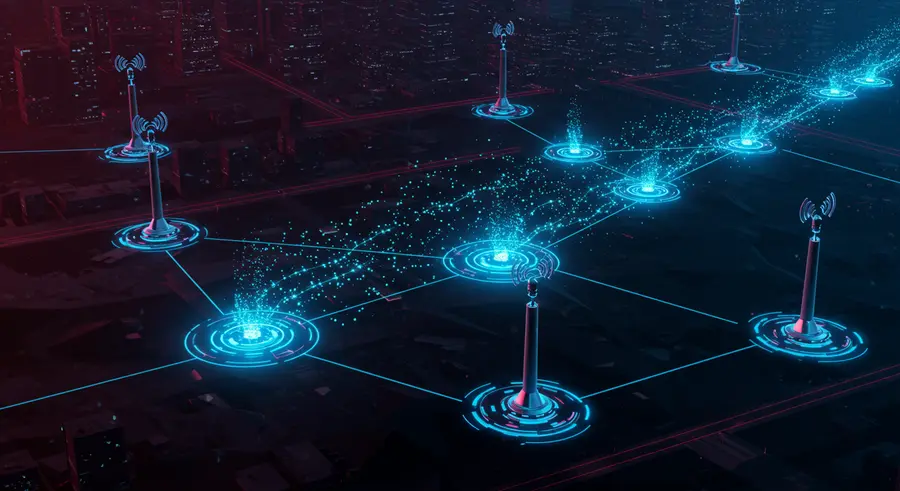5G and Edge Computing: A Synergistic Revolution

The advent of 5G technology marks a pivotal moment, not just for mobile communications but for the entire digital landscape. Its promise of ultra-low latency, massive connectivity, and unprecedented bandwidth is set to unlock capabilities that were once confined to the realm of science fiction. However, to truly harness the full potential of 5G, it needs a powerful partner: edge computing.
The Pillars of 5G: Why Edge is Essential
5G introduces three main pillars:
- Enhanced Mobile Broadband (eMBB): Delivering significantly higher speeds and capacity, enabling richer media experiences and more complex applications.
- Ultra-Reliable Low-Latency Communications (URLLC): Crucial for mission-critical applications like autonomous vehicles, remote surgery, and industrial automation, where milliseconds matter.
- Massive Machine Type Communications (mMTC): Facilitating the connection of billions of IoT devices, from smart sensors to smart city infrastructure.
While 5G provides the superhighway for data, edge computing provides the localized processing power to act on that data without the need to send it all the way to a distant cloud data center. This proximity is vital for URLLC and mMTC, ensuring real-time responses and efficient handling of vast amounts of data.
How They Work Together: A Perfect Partnership
The synergy between 5G and edge computing is profound:
- Reduced Latency: 5G's network architecture, particularly Multi-access Edge Computing (MEC), allows computing resources to be deployed at the very edge of the network, often within or adjacent to 5G base stations. This drastically reduces the round-trip time for data, from potentially hundreds of milliseconds to single-digit milliseconds.
- Bandwidth Optimization: By processing data locally, edge computing reduces the amount of raw data that needs to be transmitted back to the core network or cloud. This conserves valuable 5G bandwidth, especially critical for applications generating continuous streams of data (e.g., video surveillance, industrial sensors).
- Enhanced Reliability: Local processing means applications can continue to function even with intermittent or no connectivity to the central cloud, improving system resilience for critical operations.
- Improved Security and Privacy: Data can be processed, filtered, and anonymized at the edge before being sent further, reducing the exposure of sensitive information and complying with data residency regulations.
- New Application Enablement: The combination unlocks use cases previously impossible, such as real-time augmented reality (AR) in manufacturing, precise robot control, and intelligent traffic management in smart cities.
Key Use Cases Enabled by 5G and Edge
- Autonomous Vehicles: Self-driving cars require instantaneous decision-making based on sensor data. 5G provides the high-speed, low-latency connectivity, while edge computing processes sensor data locally for immediate action, preventing accidents.
- Smart Cities: Real-time analysis of traffic flow, public safety monitoring, and environmental sensing can be performed at the edge, leading to more responsive and efficient urban management.
- Industry 4.0 (Smart Factories): Robotic control, predictive maintenance, and quality control systems demand ultra-low latency. 5G provides reliable wireless connectivity for devices, and edge computing processes manufacturing data on-site for immediate operational adjustments. Learn more about Industry 4.0 at World Economic Forum.
- Augmented and Virtual Reality (AR/VR): Delivering immersive AR/VR experiences requires massive bandwidth and extremely low latency to avoid motion sickness and provide seamless interactions. 5G streams the data, and edge computes the complex graphics and interactions nearby. Explore the potential of AR/VR at Qualcomm's AR/VR resources.
- Healthcare: Remote diagnostics, real-time patient monitoring, and AI-powered medical imaging analysis benefit immensely from the speed and localized processing power, ensuring timely interventions and better patient outcomes. Find out more about healthcare innovations at HIMSS.
The Future is Now: The Road Ahead
The symbiotic relationship between 5G and edge computing is not just a technological advancement; it's a foundational shift that will redefine how we interact with technology and data. As 5G networks continue to expand and edge infrastructure becomes more pervasive, we can expect a new wave of innovation across every sector.
This powerful duo is paving the way for truly intelligent environments, where data is processed efficiently, decisions are made instantly, and digital and physical worlds seamlessly converge. The future of connectivity and computation is undeniably at the edge.